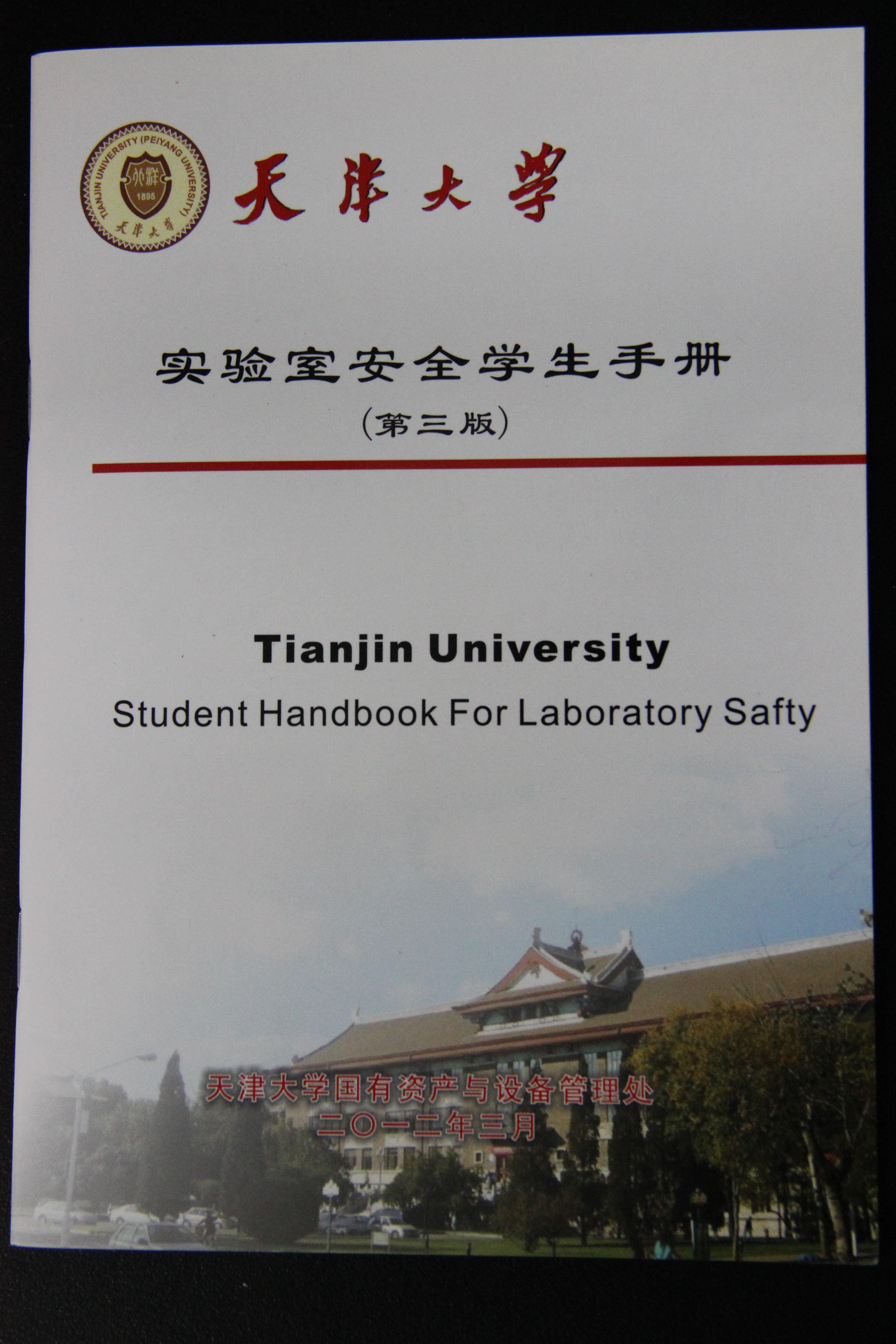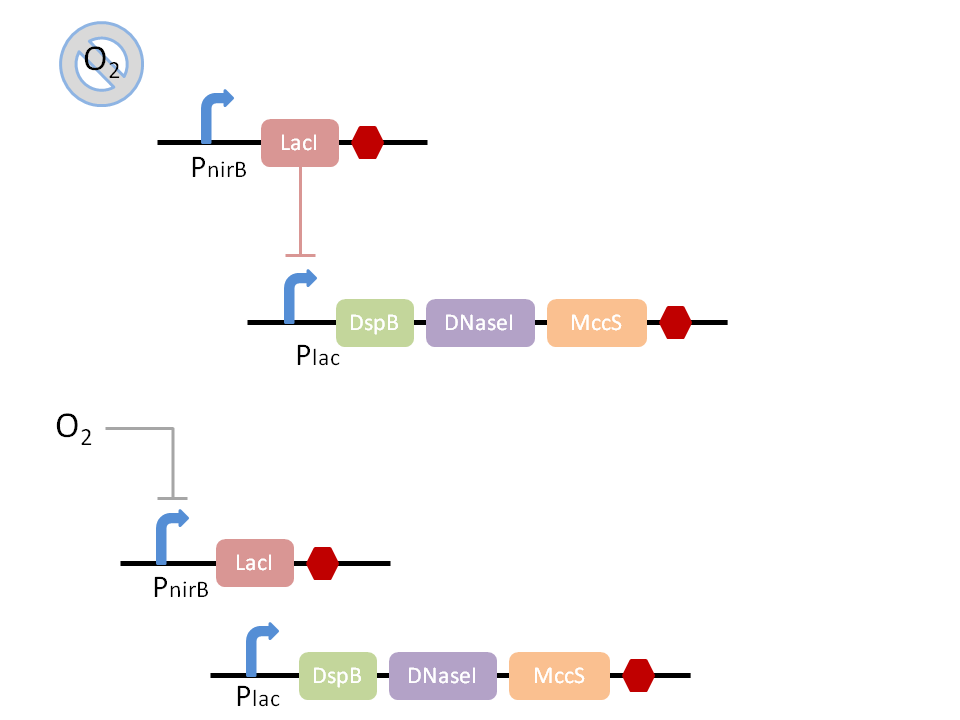Team:TJU/Safety

|
On August 12, a massive warehouse explosion hit Tianjin, China, resulting in at least 114 deaths and hundreds of people injured, let alone the economic loss it brought. The tons of hazardous articles leakage including sodium cyanide compelled thousands of people to leave their homes. |


Lab Safety Course and Exam
|
Before our efforts to begin the experiments, we were all required to take Lab Safety Course in our school. The topics varied from proper dressing which includes wearing gloves, goggles and lab coats when working in lab, to general lab safety like no food or drinks stored in the lab, and no chemical and biological substances taken out of lab without permission and appropriate methods. In addition, we have been trained carefully to deal with hazardous and corrosive material by using fume hoods and protective gloves. Whoever uses those detrimental materials are required to be recorded and check the labels when they finish. The wasted substances need to be classified and collected in an appointed containers, and marked with name of substance as well as basic properties. Then we need to contact with disposal center from our school or other specialized company to deal with them. Also, maintaining a clean workspace is crucial since it can reduce the fluctuation brought by contaminants. For example, ethanol has been used to clean our desks before putting into service. Particularly, this year, all of our team members have to read Laboratory Biosafety Manual carefully and take a safety exam. We can enter the lab only if we pass the exam, which makes sure that we have bore those tips in minds indeed. |
Safety Assistance From Advisors
|
Talking to safety advisors and professors asking for more practical help were designed as a part of our lab safety education. Professor Yuan took us into his lab and introduced operating cautions about some equipments. For instance, we need to clean our hands before using super clean bench in order to avoid contamination from environment. Besides, detail operations, such as how to use a spectrophotometer or running gels are acquired from senior students. We also have regular safety checking from advisors. All of our attempts are trying not only to guarantee our safety, but also to make everyone safe. |

Researcher Safety
|
Organisms used in our project belong to category level 1, which are unlikely to cause human or animal disease. Although none of organisms is harmful, still, all of our team members need to be trained and tested strictly before experiments based on the Biosafety Manual. Regular safety precautions such as wearing gloves, glasses and a lab coat to protect us are implemented. Besides, we envisioned that the engineered bacteria would be equipped with safety system aiming to protect human’s health |
Public and Environment Safety
|
With all of our attempts to cut off the interactions between engineered colony and natural species together with the fact that all of bacteria we used are biosafety level 1, therefore, our project unlikely to have a remarkable influence on the public environment safety. In case any laboratorial bacteria would escape into outer environment, all infectious materials or bacteria like our engineered E.coli, Bacillus subtilis and Shewanella oneidensis should be decontaminated, autoclaved or incinerated within the laboratory. |
|
In order to provide further helps for future iGEM team, we designed a diagram about how to implement universal safety control during their project. As a common strategy, future teams can design their own Safety Control Diagram via adding their favorable features based on this. For example, this year, safety training was used along with safety test and this feature gave us a deeper impression on the safety awareness. We hope that this design will evoke public concern of biosafety and thus make the world better. |

Dispersing and killing system
Although we have assessed that all of our organisms are included in BSL 1, there are still some possible risks that our modified parts or system may damage the natural integrity and balance. |
|
To fulfill our obligation, we designed a genetic circuit as our safety guard to dispose the escaped cells, which means to disperse biofilm, kill bacteria and further, to degrade DNA under the control of oxygen concentration. As the colony fermented anaerobically in MFC, nirB promoter is constructed to respond according to dissolved oxygen around in the atmosphere. Anaerobic condition activates nirB promoter so that the following genes can expressed and inversely, nirB promoter will inactivate in the presence of O2.[1] Inspired by this phenomenon, we further take in lac promoter and lacI geneintended to activate the dispersing and killing system after provided with O2, which accords with our actual need. Lacl works as repressor when nirB promoter is activated without oxygen and suppresses the expression of DspB, DNasel and MccS. |
Our safety system designed to reduce the possibility that modified bacteria may affect the equilibrium of the environment when our MFC is applied outside of laboratory one day. We found that biofilms are related to most bacterial chronic inflammatory and infectious diseases as well as involved in biocorrosion and biofouling in diverse areas.[2] Additionally, Dispersing B (DspB) exhibits biofilm-detachment activity.[3] Hence, we introduce it in our system as a hard core to prevent biofilm formation through matrix polysaccharides degration. Further, the reprogrammed bacteria kill the latent cells and itself by expressing and secreting the antimicrobial peptide microcin S (MccS).[4] After dispersing and killing, nuclease DNaseI has been used to deal with the gene leakage which may hybridize with native species and causing genetic pollution.[4] Besides, several studies has indicated that exogenously added DNases could inhibit biofilm formation, disperse preformed biofilms, and sensitize dormant biofilm bacteria to biocide killing.[4] So we introduce DNaseI as supplementary power to disperse and to kill. |
Reference
|
[1] M.D.Oxer, C.M.Bentley, J.G.Doyle, T.C.Peakman, I.G.Charles and A.J.Makoff*. (1991) High level heterologous expression in E.coli using the anaerobically-activated nirB promoter. Nucleic Acids Research, Vol. 19, No. 11 [2] Hong, S.H. et al. Synthetic quorum-sensing circuit to control consortial biofilm formation and dispersal in a microfluidic device. Nat. Commun. 3:613 doi: 10.1038 / ncomms1616 (2012). [3] Suba G. A. Manuel, Chandran Ragunath, Hameetha B. R. Sait, Era A. Izano, Jeffrey B. Kaplan and Narayanan Ramasubbu. (2007) Role of active-site residues of dispersin B, a biofilm-releasing b-hexosaminidase from a periodontal pathogen, in substrate hydrolysis. doi:10.1111/j.1742-4658.2007.06121.x [4] In Young Hwang, †Mui Hua Tan, †Elvin Koh, Chun Loong Ho, Chueh Loo Poh, and Matthew Wook Chang*. (2013) Reprogramming Microbes to Be Pathogen-Seeking Killers. dx.doi.org/10.1021/sb400077j | ACS Synth. Biol. |

E-mail: ggjyliuyue@gmail.com |Address: Building No.20, No.92 Weijin road, Tianjin University, China | Zip-cod: 300072
Copyright 2015@TJU iGEM Team








